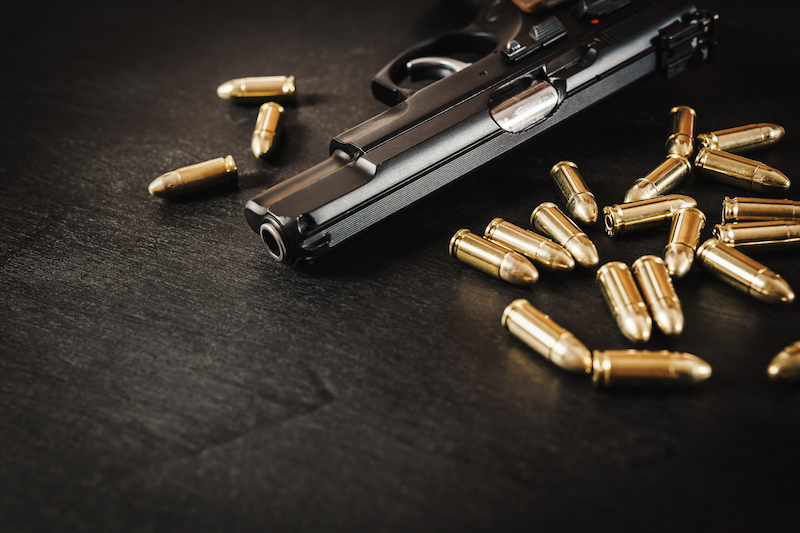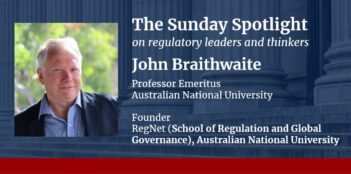
Lobbying and appropriations limits undermine the enforcement of gun regulations.
One of the most frequently repeated tropes about gun laws and regulations is that they are ineffective, or—worse yet—ultimately useless at thwarting the adverse consequences of guns. Yet one need not search far to find effective gun laws, or to understand why this is so often said about gun regulation.
In the late 1920s and early 1930s, America witnessed a rise of criminal and gangland violence, cultivated in part by Prohibition and the Great Depression. The calling card of this violence was its weaponry—sawed-off shotguns, submachine guns like the notorious Tommy gun (dubbed “the gun that made the Twenties roar”), and the Browning automatic rifle. With such weapons favored by criminals like Bonnie and Clyde, “Pretty Boy” Floyd, and the Al Capone gang, criminals often out-gunned law enforcement. In response, states moved to enact laws to bar these weapons. From 1925 to 1934, at least 28 states enacted laws to restrict or outlaw the sale or possession of these exotic and destructive weapons—especially fully automatic weapons. Seven to 10 states restricted or even barred semi-automatic weapons as well.
Such state action, combined with public pressure, ultimately resulted in the first significant federal gun law, the National Firearms Act of 1934. That law did not actually bar gangster weapons; instead, it imposed a then-hefty $200 tax on listed weapons, including machine guns, sawed-off shotguns and rifles, and silencers. Purchasers of these weapons also had to apply for a permit by providing fingerprints and a photograph, and then had to undergo a thorough background investigation by the Federal Bureau of Investigation (FBI). The gun or silencer itself had to be registered.
The net result of this firearm legislation has been to sharply restrict circulation of regulated weapons. The Bureau of Alcohol, Tobacco, Firearms, and Explosives (ATF) reported only about 600,000 registered fully automatic weapons in civilian hands as of 2017. More significantly, the use of fully automatic weapons in crime is now virtually unheard of.
The lessons of the 1934 law are several. First, gun regulations can be effective if they are written with effectiveness as a bona fide goal. Second, a thorough, detailed background check and waiting period process to qualify for a handgun permit, as exists today in some states, is more effective in identifying disqualifying factors than the current National Instant Criminal Background Check System. Third, licensing and registration are very effective strategies in keeping guns out of the hands of those who should not have them. A growing body of contemporary research confirms the efficacy of these regulatory devices and others, like waiting periods.
Gun policy change was controversial in the 1930s, but that controversy pales when compared to the contemporary political atmosphere surrounding the issue. A chief animating goal of the gun rights movement, headed mostly by the National Rifle Association (NRA), has been to thwart the enactment of new gun laws, weaken them if they cannot be stopped, and blunt the effective implementation of new and existing laws. Proponents of gun rights are often quoted as saying that the nation does not need new gun laws; it just needs to enforce the existing ones. But that claim is deeply misleading, especially as the NRA works relentlessly to undermine the enforcement and effectiveness of existing laws.
To take a textbook example of how manipulation of policy implementation can undermine effective regulation, take the case of the ATF, the federal agency charged with enforcing gun laws. Congressional appropriations caps, statutory limitations, and relentless political attacks have ensured that it has never had the resources or the authority needed to do its job.
The number of ATF agents charged with inspecting gun dealers has remained roughly the same since 1973. Thanks to a provision passed by Congress in the Firearms Owners Protection Act of 1986, agents are limited to one unannounced on-site gun dealer inspection every year, regardless of the dealer’s past record. The ATF is also barred by law from computerizing its records. Background checks are still conducted by hand, laboriously, by employees who must sift through paper records housed at its tracing center in Martinsburg, West Virginia. A routine trace takes about five days—a process that would take seconds by computer. The ATF is also barred from creating a database of what guns have been sold, to whom and when.
Within the ATF organization, effective enforcement is consistently undermined. According to a recent investigation by The New York Times, when ATF investigators uncover legal violations among gun dealers, including serious violations like selling guns to convicted felons or failing to conduct background checks, recommendations to suspend dealer licenses are invariably overruled by senior management. The Times investigators found that out of 11,000 licensed firearm dealer inspections conducted in the 12-month period from October 2016 to October 2017, more than half were found to have committed violations. Yet less than 1 percent of these dealers actually lost their federal license.
This outcome is the result of three factors. First, existing law says that dealers must not only have been found to have violated the law, but that they did so “willfully,” a high legal standard that is almost never applied to other law violations.
Second, the Trump Administration, closely aligned with the NRA, has little interest in pursuing effective gun law implementation. Witness, for example, that President Donald J. Trump has not nominated a permanent head to run the ATF, nor is he likely to do so anytime soon.
Third, the ATF has been the subject of relentless political attacks for over three decades by the NRA and its sympathizers. They have argued, ironically, that the ATF was essentially a rogue agency that often abused its power and ran roughshod over people’s rights; at times, they even compared ATF agents to Nazis. All of these factors add up to regulatory impotency and failure.
Yet effective gun regulation is perfectly compatible with gun rights. The NRA has defended its hostile attitude toward gun regulation by saying that it opposes a “regulatory process making it more difficult for law abiding citizens to exercise their constitutional rights.” But the United States’s history of gun laws shows no such conflict. Legitimate gun rights and practices are best protected when law breakers and cheaters are effectively regulated and prosecuted. Ineffective or impotent regulation only undermines the integrity of law-abiding gun dealers and owners.
This essay is part of a nine-part series, entitled Bringing Expertise to the Gun Debate.




